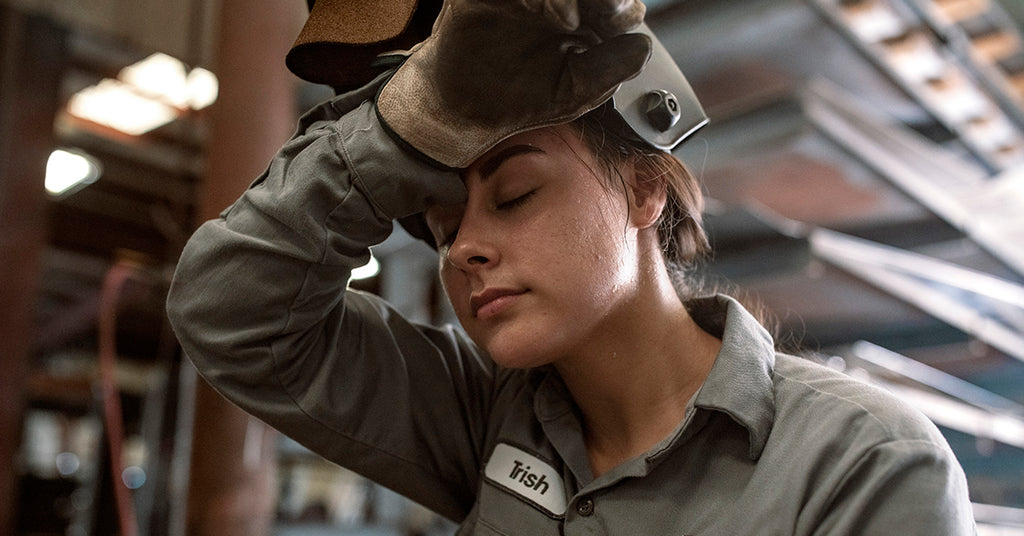Workers who are exposed to rising temperatures on the job, outdoors, or in hot indoor environments, are at risk for several heat-related illnesses, ranging from heat rash and heat cramps to heat exhaustion and heatstroke.
According to the Occupational Safety and Health Administration (OSHA), heatstroke is a serious threat to worker safety and may hinder production. The primary signs and symptoms of heatstroke are:
- Confusion
- Irrational behavior
- Loss of consciousness
- Convulsions
- Lack of sweating
- Hot
- Dry skin
- High body temperature of 105.8°F (41°C)
Dressing properly including the use of work garments with built-in moisture management technology and breathability, is but one of many ways for businesses to help protect their workers from heat-related illnesses, including heatstroke. Talk to the experts at UniFirst for a work uniform program for a smart solution to outfit workers with the right types of garments that will provide optimal protection from the potential health risks associated with working in the heat. Here are 10 tips, many of which are endorsed by OSHA, to help workers stay safe from the heat.
- Wear loose-fitting clothing if safe to do so. Flowing garments allow air circulation close to the body, which helps keep the body cool and dry.
- Select clothing with fabrics that are lightweight and moisture-wicking. Look for clothing, such as 100-percent spun polyester, that is quick-drying with built-in moisture management technology like our UniSport® short sleeve polo shirt for maximum breathability and comfort.
- Choose clothing with built-in ventilation. Clothing constructed with lightweight, mesh fabric, such as our MIMIX™ collection, offers superior breathability and comfort.
- Wear light-colored clothing. Dark colors absorb heat. Wearing light-colored garments helps reflect light and heat and will help maintain a normal body temperature.
- Cover as much skin as possible. When outdoors, workers should wear long sleeves and pants constructed of lightweight fabric and loose-fitting designs to help protect the skin against permanent damage from the sun, while providing breathability and airflow.
- Wear a well-vented hat. Since the head quickly absorbs heat, wearing a hat with ventilation will create a barrier from the sun, protecting the head, face, and neck.
- Protect the eyes. Wearing sunglasses when working outdoors will help reduce glare on the eyes and protect them from the sun’s damaging rays.
- Look for protective garments that are breathable, such as our Bulwark iQ Series flame resistant workwear. At-risk workers who must wear protective garments should seek out garments that combine the highest level of protection with light-weight fabrics to help keep workers cool and comfortable.
- Educate your team and monitor workers. In order to optimize your team’s safety, UniFirst First Aid + Safety offers programs that focus on general Heat Stress and Heat Stress in Construction Environments. These programs review how heat affects the body, the steps employees can take to prevent heat-related illnesses, and elementary first aid that can be given to a worker who has been affected.
- Take plenty of breaks and stay hydrated. It’s important that workers take regular breaks and drink plenty of fluids while doing their job in extreme heat, especially outdoors. Depending on the heat, there will be instances where water still may not be enough to keep outside workers hydrated. Products like the Sqwincher Zero Qwik Stik and Sqwincher Beverage Enhancer, available through UniFirst First Aid + Safety, provide the necessary electrolytes to help keep workers safe, hydrated, and productive.
Although working in warm weather poses many challenges, following these tips and participating in a managed employee uniform programcan help businesses protect their workers against heat-related illnesses so they are able to stay safe and productive on the job. Call (833) 903-2944 today to talk to an expert.

